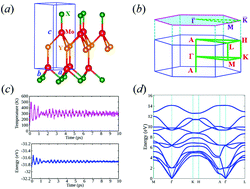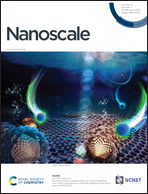A type of novel Weyl semimetal candidate: layered transition metal monochalcogenides Mo2XY (X, Y = S, Se, Te, X ≠ Y)†
Abstract
Based on ab initio calculations and the Wannier-based tight-binding method, we studied the topological electronic properties and strain modulation of transition metal monochalcogenides (TMM) Mo2XY (X, Y = S, Se, Te, X ≠ Y). These materials are nodal line semimetals in the absence of spin–orbit coupling (SOC). The presence of SOC turns them into Weyl semimetals with 24 Weyl nodes located in the kz ≠ 0 planes and related by time-reversal, rotation C3z, and mirror symmetries. The maximal separation between two neighboring Weyl points with opposite chirality is of the order of magnitude of 0.10 Å−1, which can be readily accessed by angle-resolved photoemission spectroscopy (ARPES). The Weyl semimetal phase shows great robustness and demonstrates different responses under uniaxial and biaxial strain. Intriguingly, the location of the Weyl point changes significantly, resulting in a striking modulation of topological properties under in-plane biaxial strain. Our finding provides a realistic and promising platform for studying and manipulating the behavior of Weyl fermions in experiments.



 Please wait while we load your content...
Please wait while we load your content...